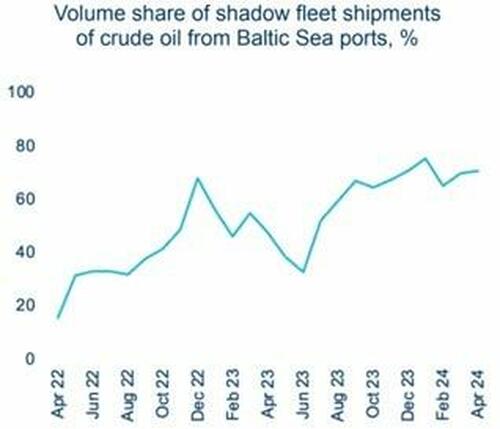
Growing and Preparing Dried Beans – Part 1
by AF, Survival Blog:
Do you remember your first assigned chore from childhood? Starting at age four, I was tasked with walking up the ridge to my grandparent’s home every Monday around five o’clock to bring home our portion of the week’s pinto beans. To my knowledge, my grandmother fixed pintos every Monday from the late 1940s through the late 1990s. On Sunday evening she would spill out the dry beans on her kitchen table, then “look them” for stones or debris then sweep them into a large bowl to soak overnight.
TRUTH LIVES on at https://sgtreport.tv/
On Monday morning the beans were rinsed, moved into a large pot, covered with water and set on the wood cook stove in preparation to feed the family and whomever might stop by. A little bit of salt, pepper and a piece of cured streaked meat were the seasonings and as surely as night follows day, the beans were served along with stewed potatoes and cornbread. Given that leftovers were heated on the stove top, any beans not eaten early in the week would be approaching refried consistency by Thursdays. When my mother took over fixing the beans, the recipe stayed the same and the beans were tasty but the low and slow wood stove imparted flavor couldn’t be duplicated.
Several years ago, a friend of my wife’s mentioned that she and her husband had begun growing their own pinto beans and bragged on how much better they tasted than store-bought dried beans. Having said the same thing to others myself about home-grown carrots, tomato, broccoli and umpteen other vegetables, I had to stop and ask “Really?” After all, we are talking about a dried bean – how could the flavor be much different between store-bought and homegrown? Shortly thereafter the proverbial gauntlet was thrown when we had a pair of dishes ruined when store-bought dried beans failed to hydrate and soften. Thus, the challenge of growing our own dried beans was accepted. Spoiler alert: my wife’s friend was right.
At the time we had a couple of years’ experience growing field peas and research indicated that we could grow drying beans in the same manner. Our growing process begins with driving five-foot-tall T-posts about every eight to ten feet apart to mark out forty-foot-long rows. We then run 14-gauge galvanized fencing wire at roughly 10 inches and 48 inches above ground level. The wire is wrapped around the two end T-posts and short pieces of wire are used to fasten the intermediate posts and wire together.
Early on, we wrapped the primary lengths of wire around the intermediate posts but found that we damaged the wire and shortened its service life as well as had no ability to easily tension the trellis throughout the growing season if needed. We install drip tape along the length of each row on the up-hill side of our trellis posts. Next, we weave jute twine between the parallel trellis wires and secure the twine after every third wrap using a square knot. The intermittent knots prevent the twine from falling away in long spans should it decay or break during the growing season prior to the bean vines reaching the top trellis wire.
To prepare the soil for planting, I run a small Mantis tiller along each side of the drip tape then create a furrow on each side using the corner of a garden hoe. We have found that double rows work well for drying beans and field peas as long as drip irrigation is available. Next, we sprinkle about one and a half cups of a general purpose fertilize (10/10/10 or triple 17 are the most available options here) to each furrow. The furrows are back-dragged to slightly bury the fertilizer, and then the bean or pea seeds are planted. Up until this year, we hand-planted all of our seeds.
To make the process easier on aging backs, we would wear a cloth carpenters’ apron to hold the seed and carry a three-foot-long piece of ¾ inch PVC pipe that we dropped the seed through to keep from bending so much and still control the placement of the seeds within the rows. This year we invested in a garden seeder from Agri Supply Co. and after a slight learning curve, the addition cut our bean and corn planting time by a lot.
Depending on the weather and variety, we have had sprouts break the ground in as few as three days although some varieties have taken close to two weeks. Thus far in our experience, most drying style beans are bush type and common wisdom is that the trellis is not necessary. What we have found though is given our dense planting style with the double rows and the prevalent North wind here, the trellis keeps the beans upright through drying and we lose far less to ground spoilage with the trellis than we did prior to using them. Around the midpoint of the growing season, we will use the drip irrigation to apply liquid fertilizer. This year we also installed three-foot-wide geotextile between the rows to minimize the need to weed. This has really helped thus far and I anticipate we will have less ground loss as the beans begin drying out this fall. By treating the fabric carefully during the season then shaking it off and rolling it up for winter storage, we have been able to get five or more years of use out of it in other areas of the garden before having to buy replacement.
Originally Posted at https://www.sgtreport.com
Stay Updated with news.freeptomaineradio.com’s Daily Newsletter
Stay informed! Subscribe to our daily newsletter to receive updates on our latest blog posts directly in your inbox. Don’t let important information get buried by big tech.
Current subscribers:








